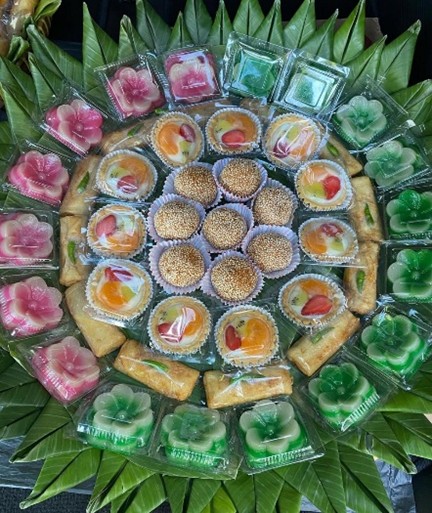Retail Communication Mix to Strengthen the Competitiveness of MSMEs in the Digital Age
Main Article Content
Nur Hidayah*
Erlinda Desmawati
Cathleen Anabel Tunru
The purpose of this activity is to provide guidance on the application of retail communication mix as a marketing strategy that can increase the competitiveness of Micro, Small and Medium Enterprises (MSMEs) in the digital era. In the context of increasingly fierce business competition, MSMEs are required to be more creative and innovative in reaching consumers. Retail communication mix, which consists of various elements such as new media and traditional media, is considered one of the keys to the success of a business. The activity was carried out with MSME partners engaged in the food sector. The main problem faced by partners was a lack of knowledge about using retail communication to maintain their competitiveness and existence. The methods used were initial observation and training. This activity is expected to contribute to the development of the partners' knowledge, particularly in the fields of management and retail marketing. In addition, the results of this activity are also expected to provide recommendations for partners in designing effective retail marketing strategies to increase their business competitiveness in the digital era.
Ahuvia, A. (2016). Brand love: development and validation of a practical scale. Marketing Letters.
Dong, X., Liu, H., Xi, N., Liao, J., & Yang, Z. (2024). Short video marketing: what, when and how short-branded videos facilitate consumer engagement. Internet Research, 34(3), 1104–1128.
Grewal, D., Hulland, J., Kopalle, P. K., & Karahanna, E. (2020). The future of technology and marketing: A multidisciplinary perspective. Journal of the Academy of Marketing Science, 48(1), 1–8.
Khan, M. A., Yasir, M., & Khan, M. A. (2021). Factors affecting customer loyalty in the services sector. Journal of Tourism and Services, 12(22), 184–197.
Khilola, Y., & Jibril, A. B. (2024). The impact of marketing mix on indigenous business development in Uzbekistan: A regression analysis. Journal of Intelligent Communication, 3(2), 1–19.
Kotler, P., & Armstrong, G. (2008). Prinsip-prinsip pemasaran (Vol. 1, Issue 2). Jilid.
Kotler, P., & Keller, K. . (2016). Marketing Management (15th ed.). Pearson Pretice Hall inc.
Lemon, K. N., & Verhoef, P. C. (2016). Understanding customer experience throughout the customer journey. Journal of Marketing, 80(6), 69–96.
Levy, M. (2004). Retailing management. McGraw Hall.
Levy, M., Weitz, B. A., & Grewal, D. (2019). Retailing management, 10th. edit. ed. New York: McGraw-Hill Education.
Payne, A., & Frow, P. (2017). Relationship marketing: looking backwards towards the future. Journal of Services Marketing, 31(1), 11–15.
Purnama, S., Bangun, C. S., Panjaitan, A. R. S., & Sampoerna, S. T. (2022). The effect of digitalization on culinary msmes on increasing sales turnover during covid 19 pandemic. Aptisi Transactions on Technopreneurship (ATT), 4(1), 58–67.
Sihite, M. (2018). Peran kompetensi dalam mewujudkan sumber daya manusia yang berdaya saing tinggi di era revolusi industri 4.0: suatu tinjauan konseptual. Jurnal Ilmiah Methonomi, 4(2), 145–159.
Tsikirayi, C. M. R., Muchenje, B., & Katsidzira, Z. (2013). Impact of integrated marketing communications mix (IMCM) in small to medium enterprises (SMEs) in Zimbabwe as a marketing tool. Research in Business and Economics Journal, 7, 1.
















